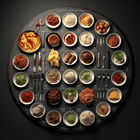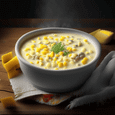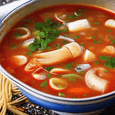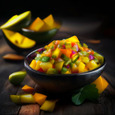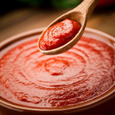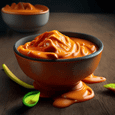From the dawn of humanity, the way we prepare and enjoy our food has undergone a fascinating evolution. In this article, we will explore the journey of delicious dishes throughout history and how they have transformed over time.
Culinary Advancements: A Taste of the Past
In ancient times, our ancestors relied on simple cooking methods to satisfy their hunger. They would hunt, gather, and cook their food over open flames, leading to the discovery of fire and the birth of cooking. These early humans relied heavily on natural ingredients, such as meats, fruits, and vegetables, which formed the backbone of their daily sustenance.
As civilizations advanced, so did their culinary practices. The introduction of agriculture revolutionized the way people lived and ate. The cultivation of crops allowed for a more reliable food source, leading to the development of diverse dishes and flavors. Spices and herbs became prized commodities, and cooking techniques became more sophisticated.
Exploration and Globalization: Spreading Flavors
The Age of Exploration brought about a significant shift in culinary traditions. As explorers ventured into new territories, they encountered uncharted ingredients and spices. This led to the exchange of culinary knowledge and the introduction of new flavors to different parts of the world.
With the rise of trade networks and globalization, exotic ingredients like spices, sugar, and coffee became more accessible. This newfound availability of ingredients sparked a culinary revolution, as chefs and cooks began experimenting with new combinations of flavors and techniques. The fusion of different cuisines created entirely new and unique dishes.
Industrial Revolution and Mass Production: Changing the Culinary Landscape
The Industrial Revolution in the 18th and 19th centuries transformed every aspect of society, including the way we prepare and consume food. New technological advancements made it possible for mass production of ingredients and pre-packaged meals.
The invention of canning and refrigeration allowed for the preservation of food, enabling people to access a wider variety of ingredients regardless of the season. This revolutionized the culinary industry, making it easier and more convenient to prepare delicious dishes.
Modern Culinary Trends: From Farm-to-Table to Molecular Gastronomy
In recent decades, the focus on organic and sustainable farming practices has given rise to the farm-to-table movement. Chefs and home cooks alike emphasize the use of fresh, locally sourced ingredients in their dishes. This shift towards conscious eating has brought back traditional cooking techniques and revived the appreciation for simple, flavorful dishes.
Alongside the farm-to-table movement, there has been a surge in experimental and avant-garde culinary trends. Molecular gastronomy, for example, explores the science behind cooking and transforms food into an artistic experience. Chefs push the boundaries of taste and texture, creating visually stunning and innovative dishes that challenge our perception of flavor.
The Future of Delicious Dishes: Where Will Taste Take Us?
As technology continues to advance, the culinary landscape is likely to undergo further transformations. With the rise of artificial intelligence and automation, we may witness the emergence of new cooking techniques and even robotic chefs creating gourmet meals.
Additionally, as our understanding of nutrition and sustainability deepens, we can expect a greater emphasis on healthy and eco-friendly dishes. Plant-based cooking and alternative protein sources may become more mainstream, revolutionizing traditional recipes.
In conclusion, the evolution of taste has been a journey filled with exploration, innovation, and cultural exchange. Delicious dishes have transformed over time, reflecting the changing needs, preferences, and advancements of humankind. As we look to the future, one thing is certain - the world of food will continue to evolve and surprise us with new flavors and culinary experiences.
